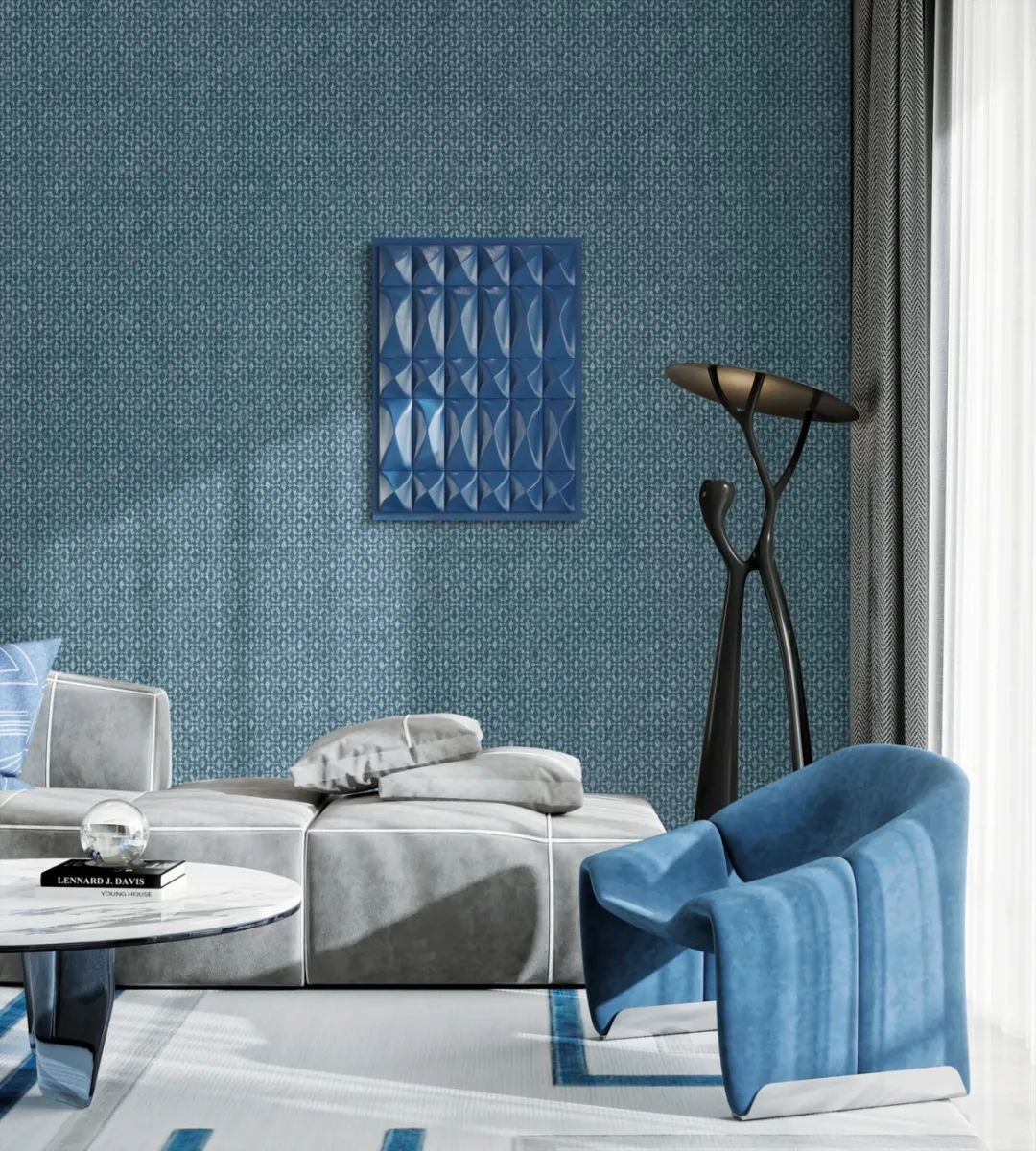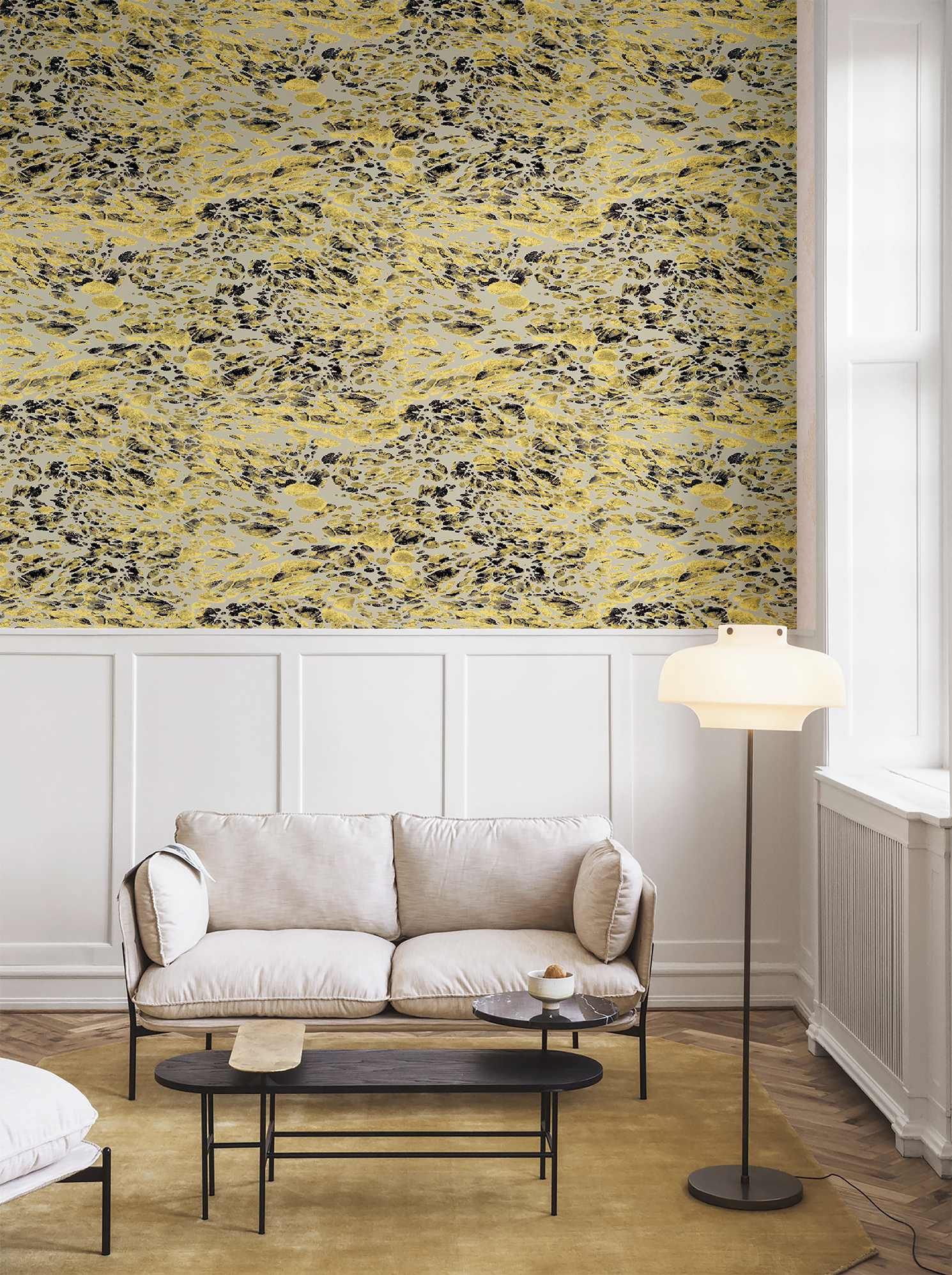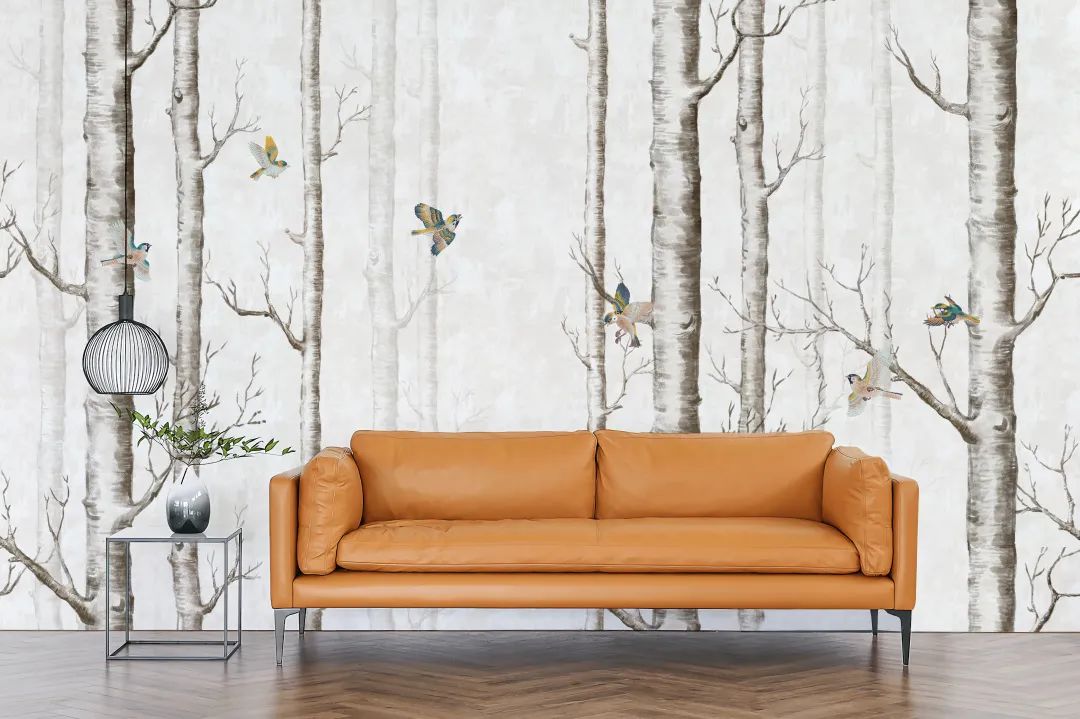Wallcovering is like the formal dress of household metope, give the home vivid and lively expression.
The surface materials of the wallcovering are rich and varied, or silk, or chemical fiber, or pure cotton, or covering leather, which is woven from a single material, or a composite of several materials. Therefore, there are various classifications of wallcoverings on the market.
According to the different surface materials, craftsmanship and base, Xiaoxin is divided into 3 categories. Let's take a look.
① According to the surface material: imitation linen wallcovering, imitation yarn wallcovering, hemp wallcovering, silk wallcovering, etc.
② According to the process: jacquard wallcovering, printing wallcovering, embroidery wallcovering
③ According to the base: spunlace cotton non-woven bottom wallcovering, coated base wallcovering, fabric-back wallcovering, paper base wallcovering

Vol.1 according to the surface material
Imitation flax wallcovering is generally with polyester, silk and other man-made fiber is the main, there are also some man-made fiber and a few natural fiber to form the mixed silk, the price is lower.
The suede wallcovering is modeled on cashmere, camel hair and other cashmere, the surface has short velvet, delicate touch, smooth feel, not easy to reflect, the wall effect is good. The surface of this type of wallcovering cannot touch glue, and it will be difficult to take care of if there are stains in the later stage.
The imitation silk wallcovering imitates the appearance of silk, with obvious silk shape on the surface. Generally, it is made of non-natural silk such as chemical fiber , three-dimensional sense is obvious, has better air permeability.
The surface texture of the natural hemp wide wallcovering is natural, the thickness is intertwined, and the cost is high. Cotton, linen, spun linen and other natural hemp wide-width wallcoverings are relatively rough, with good air permeability, but poor elasticity.
Yarn wallcoverings include spun yarns and rovings, which refer to wallcoverings whose surface is composed of yarns. The yarn that has not been waterproofed on the surface can see obvious fine velvet. This kind of yarn cannot touch the glue, and the stains are difficult to deal with, but the three-dimensional effect on the wall is strong and the effect is good.
The silk wallcovering is made of silk material, which is soft, thin, transparent, smooth, and has good air permeability. At the same time, the cost is also very high and the construction is difficult.
Vol.2 Classified by process
01 Floral wallcovering
The jacquard wallcovering is directly weaved with a jacquard machine in the production process. First, the lines are interlaced up and down to form different designs and colors, and then the jacquard wallcovering is made by composite technology. The jacquard machine is also divided into jet machine, electronic faucet jacquard machine, large rapier and so on.
Jacquard wallcovering is more resistant to high temperature and has good color fastness. The wallcovering that has been treated with three-proof can wipe the surface stains.

02 Printed wallcovering
Printing, as the name implies, is printed on the base fabric through various processes. The base fabric includes matt satin covering, non-woven fabric, linen covering and jacquard covering, etc., and is realized by rotary screen, flat screen, thermal transfer and other processes.
It has bright colors, high cost performance, and poor color fastness compared to jacquard wallcoverings. The digitally printed wallcoverings on the market are also a type of printed wallcoverings, and the background walls are used more.
03 Needlework wallcovering
Embroidered wallcovering is based on printed wallcovering or jacquard wallcovering, and adopts embroidery techniques such as flat embroidery, towel embroidery and covering sticking embroidery to outline the pattern from point, line and surface to realize "printing + embroidery" and "lifting + embroidery".
It has colorful patterns and gorgeous colors, and is an essential element of Chinese-style decoration, usually used in living rooms, bedrooms and porch background walls.

Vol.3 Classification by base
(1) Spunlaced cotton non-woven bottom wallcovering
The raw material contains pure cotton, which has a certain degree of shrinkage, good toughness, and good softness. It can be stretched to a certain extent during the construction of walls with many shapes.
(2) Coated bottom wallcovering
It is generally thin and has a certain tensile force. It has high requirements on the base course, good flatness on the wall during construction, and is not prone to the problem of glue penetration. When the temperature is low in winter, the coating bottom will become hard, which increases the construction difficulty.
(3) Cross cloth mesh bottom wallcovering
The bottom is a thin cross mesh wallcovering, the surface is mostly PVC, and the overall thickness is heavy. Construction is usually not easy to paste, it is recommended to use high adhesive glue thick glue thin coating.
(4) Hot glue wallcovering
The back has its own glue, no need to glue when the construction, just use the hot ironing machine can be ironed. Hot glue wallcoverings have very high requirements on the firmness of the base layer, and there should be no dust on the walls.
(5) Paper bottom wallcovering
It is generally thick and has no tensile property, but it is easy to crease when pressed, and it is not easy to recover. Generally, the surface is mainly made of yarn or natural materials, and the construction is difficult.
There are many kinds of wallcoverings, and you can choose the appropriate material and style according to your home decoration needs.